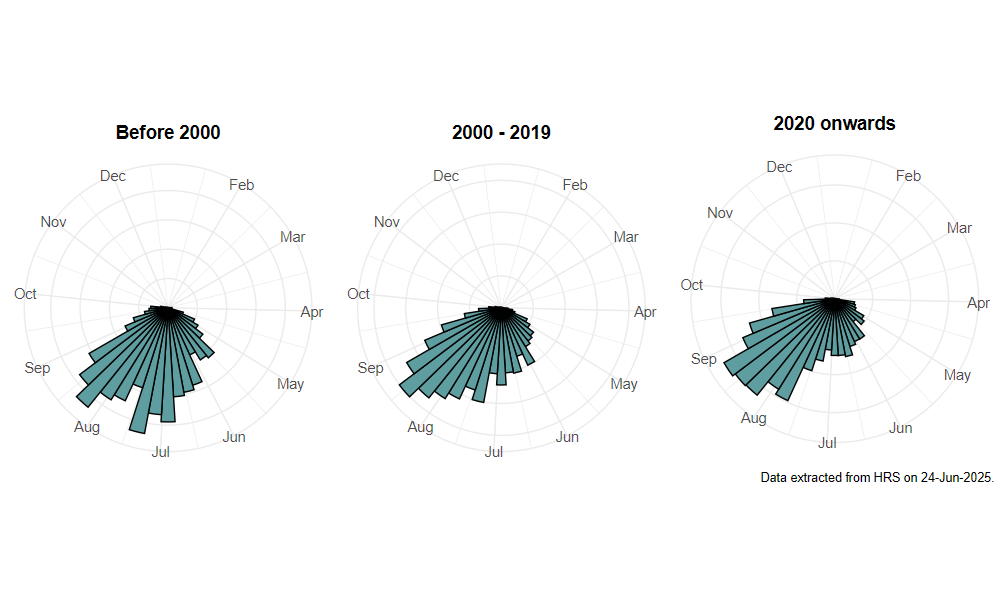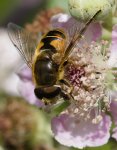Eristalis nemorum (Linnaeus, 1758)
Identification
Identification difficulty = 2. ![]()
![]() according to Ball & Morris, 20241
according to Ball & Morris, 20241
Synonymy
Eristalis interruptus (Poda, 1761) in Stubbs & Falk (2002)2, Ball & Morris (2000). There is a long standing dispute over this name which has led to it being swapped between E. interrupta and E. nemorum several times over the last century. ICZN published a ruling in 2006 which should settle the issue in favour of E. nemorum.
Biology
The larva is of the 'long-tailed', aquatic type and is found in shallow water and semi-aquatic situations at the margins of streams and pools, often where there is enrichment and also in cow-dung. Adults are usually seen visiting flowers, especially white umbels, often in the vicinity of trees or scrub. Males make themselves conspicuous because of their fast and noisy flight. This species has a very characteristic courtship in which the male hovers above a female which is visiting a flower (see photograph in Stubbs & Falk (1983)3).
Flight period
The following plots show the number of unique records per week excluding those reported to be of immature stages.

Distribution
This is an extremely widely distributed and often abundant species. There are indications that it is less abundant in upland situations but this may be an artefact of recorder effort.

Trends
The following plots show the Frescalo TFactor vs year and a map of the rescaled frequency (all records) for the species.
-
Ball, S., & Morris, R. (2024). Hoverflies of Britain and Ireland. WILDGuides (3rd ed.). Oxford: Princeton University Press. ↩
-
Stubbs, A., & Falk, S. (2002). British Hoverflies An Illustrated Identification Guide (2nd ed.). Reading: BENHS. ↩
-
Stubbs, A., & Falk, S. (1983). British Hoverflies: An Illustrated Identification Guide (1st ed.). Reading: BENHS. ↩
